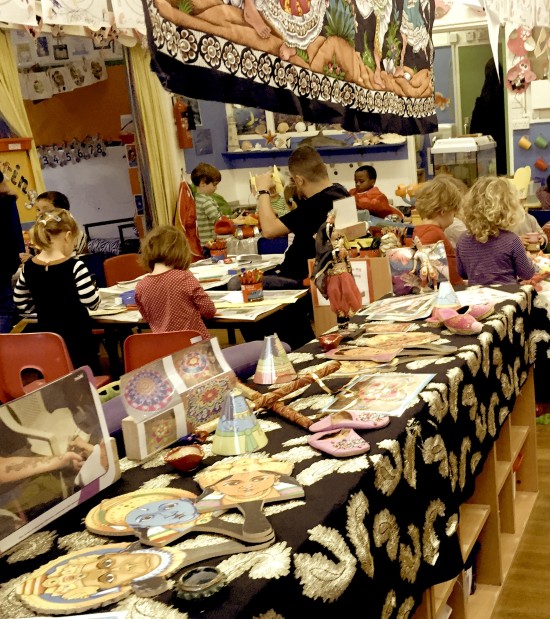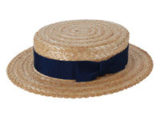 Visiting nurseries and schools is a key part of choosing the right one for your child. Unfortunately, if your child is still little and you have no experience of nurseries, it is actually not easy to spot what a great nursery should look like, and most nurseries are experienced at showing their best side during visits.
Visiting nurseries and schools is a key part of choosing the right one for your child. Unfortunately, if your child is still little and you have no experience of nurseries, it is actually not easy to spot what a great nursery should look like, and most nurseries are experienced at showing their best side during visits.
In my experience, very young parents tend to pay too much attention to superficial aspects of a nursery (beautiful wallpaper, a nice reception area, a friendly and talkative teacher showing them around) and effective PR (a nursery seeming oversubscribed, having a great website, a cute uniform, an impressive looking curriculum or extra-curriculars). They may not be as good at spotting how experienced and professional the staff is, how happy and engaged the children are and if there is a very good chance their child will thrive in a particular nursery.
An outstanding nursery would usually take ample time to show parents around and answer any questions patiently and in detail. They also tend to be very relaxed about visitors observing the children and encourage you to walk around independently to talk to the children or teachers and observe their activities. Less impressive nurseries tend to try to keep visitors away from the action and take them to a side room to give a long marketing speech, without giving you much time to actually observe what is going on in the classroom. They may be nervous that you see something you might not like (staff getting impatient with children, an unsettled child who wants to go home).
The first thing you should pay very close attention to is the qualification and experience of teachers, first of all the head teacher but also any staff member who works with the children. And this means not so much their qualification on paper only but their knowledge of how children learn and how to adapt your style to each child, as well as their long experience working with children. Some nurseries in Central London are quite expensive but hire very junior staff who come and go to boost their profits, and that’s fairly easy to spot. I always ask head teachers and any other teacher I get to speak to how long they have been working at this particular nursery and at which nursery or school they were before this. This will also give you an idea of staff turnover.
Facilities are also very important, they are not everything but for little children, a garden or small playground and enough space and light inside to move around and explore, especially in London, is very important. But make sure you pay more attention to outdoor space and the setup of the classroom indoors (are there different areas for children to explore or rest?) than beautiful wallpaper and fancy tiles.
Most importantly, observe the children. When you visit, you can often spot straight away if children are engaged in play and busy, building a tower or a boat, baking, painting, resting in the book corner listening to stories read by a teacher or role playing with their friends. Usually in a great nursery, the children are too busy playing and exploring to notice a visitor. In other nurseries, children might look tired or bored and the visitor is the most interesting thing happening to them. If most children are constantly engaged in teacher led activities (sitting on a floor while someone “teaches” them something), I am usually less impressed, although each nursery will have short sessions like this during the day. Just make sure this is not all they are doing. You can look at the quality of the materials and the variety of toys the children have access to. And again, high quality does not mean new or colourful or expensive, but rather materials that encourage creativity and exploration. Playdough, sand, water play are all great ways for children to get their hands dirty and explore.
Make sure you ask a lot of questions – how they settle in the children, what they do if a child does not make friends or does not talk, how often they take them to the garden, what do they do if a child is particularly ahead or behind their peers, how do they handle conflicts between the children? You can immediately tell if the Head is warm and loving and understands children or if they give dismissive or vague answers. I also observe the junior staff and see if they look stressed or annoyed and how the staff members interact with each other. Are they friendly and calm? Do they seem to enjoy working together?
Of course, many parents also care about preparation for entrance assessments at competitive private schools, so you may want to ask which schools children from a particularly nursery get into. Many of them even have lists with numbers, offering full transparency. That information does help, but you can also casually observe if you see any evidence of advanced drawing or writing by children while you are there. You will need to visit quite a few nurseries in order to be able to spot immediately how the children’s work seems to compare to other outstanding nurseries.
In addition to the school visit, make sure you read the inspection report and talk to current parents, if possible. And make sure you visit at least three or ideally five nurseries before making a choice, as the nurseries vary widely in style and quality.
If you visit schools, also read up on how to tell an outstanding school from a McPrep.

